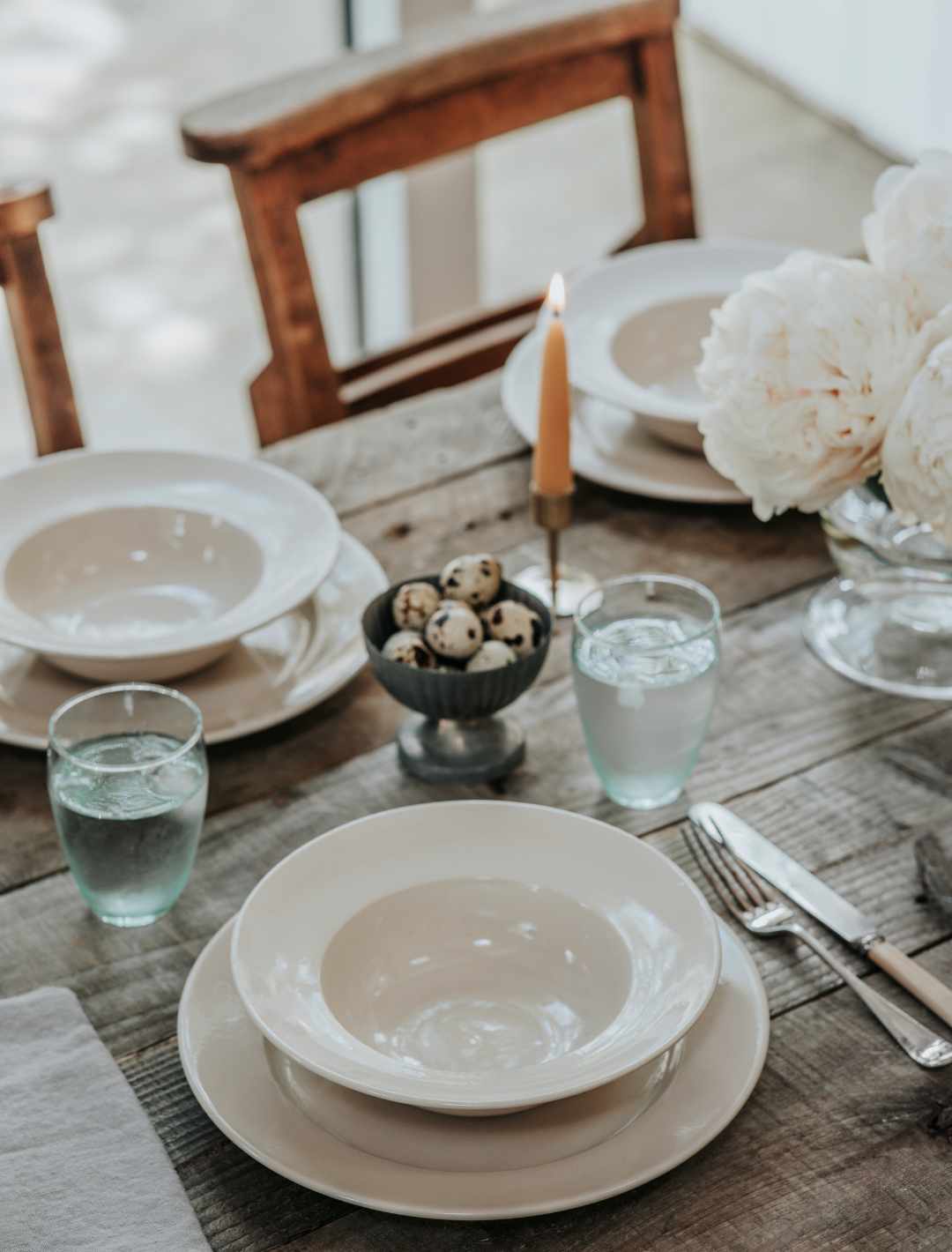Beautiful tableware can make every dining experience a joy whether it's a toast and marmalade for one or a Sunday roast for family and friends. Tableware does not even have to match all the other pieces in your collection, it can be built over years so that each piece is knitted into the fabric of everyday life.
However, choosing a tableware set can be a daunting task and it can be rather overwhelming knowing where to start. To help with this, we have created a short guide with a glossary of pottery terms to simplify the process.
Tableware can be made from a variety of materials, ceramics being a popular choice but melamine and toughened glass are also used. Ceramics is a catch-all term for the manufacturing of any product made from a nonmetallic mineral, most commonly clay, by firing it at a high temperature so that it hardens.
Earthenware, stoneware and porcelain are all types of clay. The main difference between these are the compounds that make up the clay and the temperature they can be fired at.
Here at John Julian porcelain and stoneware are our choices of clays.
So what is the difference?
One important term to understand before we go any further is vitrification. In very simple terms, the process of vitrification occurs when clay is heated to a high enough temperature that the compounds in the clay harden. This creates a non-porous structure so that the clay does not need to be glazed to remain waterproof.
Common clays used in tableware:
Earthenware
(also known as terra cotta, creamware, redware, raku to name a few)
Earthenware clay is fired at a lower temperature than other clays and is not vitrified so absorbs water but can be made impervious by glazing. It is an opaque clay that has been used for millennium. Earthenware is a softer material than other clays so once fired it chips more easily and may not last as long if heavily used.
Stoneware
Stoneware is fired at a higher temperature than earthenware (but not as high as porcelain) and is much less porous than earthenware. It is also an opaque clay but is much stronger than earthenware and is a popular material for potters to use. Our stoneware is a vitrified clay and does not need to be glazed in order to be non-porous.
Porcelain (and Bone China)
Traditionally, the most sought after and often expensive material for tableware is porcelain and Bone China. It has the reputation of being fine and delicate but it is actually incredibly durable and hard-wearing. Due to its hardness and density, it is an ideal material for luxury tableware. It is fired at a high temperature and vitrified meaning that it is non-porous and does not have to be glazed. These are also some of the reasons that porcelain makes a perfect material for Pestle and Mortars.
Bone China
Bone China is a porcelain with the addition of bone ash which enables the material to become more translucent but with increased strength meaning that it can be made thinner without getting weaker. However it is more difficult to work with and can only be slip cast into moulds.
Porcelain is much more pliable and is the preferred choice for many potters. At John Julian we use Special Porcelain to make our tableware which can be jolleyed and hand thrown. Special Porcelain is an off-white ivory colour. We also use Stoneware with a more earthy hue. Our tableware collections are designed to be timeless, versatile and made to last.
How to care for your John Julian tableware
John Julian Tableware is designed to be used for everyday use. It is dishwasher and microwave friendly.



